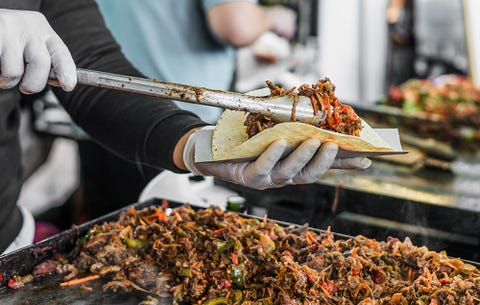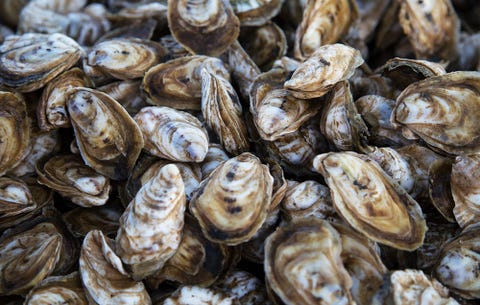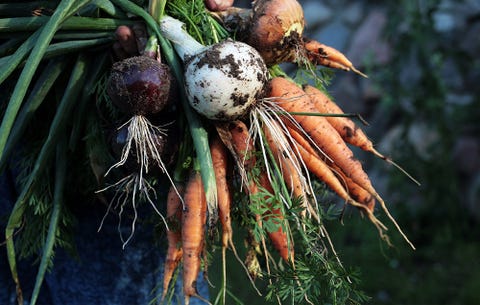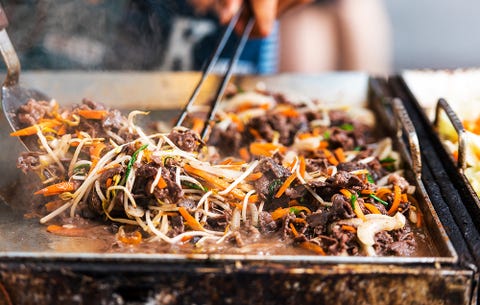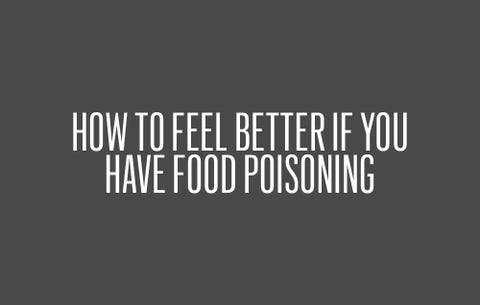Funny Where Will You Be When Diarrhea Strikes
When food poisoning hits, you basically need to camp out by the toilet. Stray too far, and, well, you might be sorry.
Food poisoning occurs when you eat contaminated food, which can result in a whole host of gastrointestinal symptoms.
"The signs and symptoms are usually abdominal cramps, nausea with or without vomiting, and diarrhea," says John Pandolfino, M.D., chief of gastroenterology and hepatology at Northwestern Memorial Hospital. This includes feeling weak and fatigued, and could also include fever and chills.
It's not always 'exotic' foods that cause food poisoning. Often, it's caused by your food handler, a contaminated kitchen, or a contaminated source, like the fields where your food was grown, as we've seen in many recent, well-publicized cases of food poisoning.
When it comes to determining the source of your food poisoning, it can be tricky to narrow down. But let's look at a few culprits that cause the most common types of food poisoning.
Food poisoning cause: Salmonella, Campylobacter and E. Coli
Bacteria like Campylobacter, E. coli, and Salmonella are the most common cause of bacterial food borne illness, says Dr. Pandolfino.
"They can take from one day to a week before they manifest and are usually the ones associated with (undercooked) meat and poultry, but can also be associated with unpasteurized milk and egg yolks," he says. That means you can't always blame the last meal you had.
How to Tell If Your Poop is Normal:
Food poisoning symptoms from salmonella include cramps, diarrhea—which can be bloody—and vomiting. Treatment is usually just rest and hydration. Your doctor likely won't prescribe antibiotics for these infections, as they can increase the risk of complications (and prolong symptoms.)
Important but little-known fact: The CDC recommends that you avoid taking anti-diarrheal medications (like Imodium) because they can slow down your digestive system, which can prolong your body from getting rid of the toxins.
Food poisoning cause: Giardia
This parasite's source is...poop. Usually from the soil, food, or water that's been infected with human or animal feces, which is why hikers and other outdoorspeople are extra vigilant about sanitizing water from streams—even if they look crystal clear—before drinking it.
Indoorsy people can get Giardia through eating contaminated food—say, if your food handler didn't wash his hands, or if your produce has been washed with contaminated water—or by swallowing contaminated water, or even having direct contact with an infected person.
On average, you come down with giardiasis about seven days after exposure, though its incubation period can range from one to 14 days, according to the Centers for Disease Control and Prevention (CDC).
This content is imported from {embed-name}. You may be able to find the same content in another format, or you may be able to find more information, at their web site.
Symptoms of giardiasis include diarrhea, gas, greasy stool, upset stomach, and dehydration, the CDC says.
"It can last 2 weeks or more," says Dr. Pandolfino. Your doctor may have you provide a stool sample to see if Giardia is to blame, and if so, you may be treated with prescription meds like metronidazole, tinidazole, and nitazoxanide.
Food poisoning cause: Vibrio
Vibrio—which causes an illness called vibriosis—is a bacteria that infects uncooked or undercooked shellfish, says Dr. Pandolfino. Oysters in particular are particularly risky, says the CDC.
Symptoms usually occur within 24 hours after eating the infected food, according to the CDC, but they can sometimes take a week to appear, says Dr. Pandolfino. These include watery diarrhea, cramping, nausea, fever, and chills.
Most infections occur from May to October, when waters are warmer, and people with liver disease are at greatest risk. Still, most people with a mild case of the bacterial illness will get better in about three days.
Food poisoning cause: Norovirus
"Norovirus is quite common and can be associated with symptoms within 12 hours to 48 hours," says Dr. Pandolfino. It causes diarrhea, nausea, and stomach pain. And outbreaks of it have even caused cruise ships to turn around to prevent more passengers from getting sick (one outbreak in January 2019 saw a reported 475 passengers fall ill from this nasty bug, which can also be transmitted through the air, not just by food).
It's one of the most contagious viruses around, and a source of major food poisoning outbreaks. Plus, there are many different types of norovirus, and getting sick with one kind doesn't necessarily protect you from getting another type down the line, the CDC says.
Norovirus can also be seen in uncooked shellfish, says Dr. Pandolfino, if their source has become contaminated. And it can come in ready-to-eat foods, like raw fruits or vegetables, if they've been handled by someone who's sick with the virus.
Most people with the illness get better within about one to three days—antibiotics won't help, since it's not a bacterial infection.
Food poisoning cause: Staph Aureus (aka staph)
When it comes to a Staph infection, you usually think of a skin infection, not food poisoning. We all carry it on our skin and in our noses, but it becomes dangerous if it enters the body.
"Foods contaminated with Staph aureus include meats and is also associated with (dairy) cream sauces or salad dressings," says Dr. Pandolfino.
You most likely will pick this up from the person who prepared your food, though. Symptoms—vomiting, nausea, stomach cramps, and diarrhea—start between 30 minutes to 6 hours after ingesting, and usually last only one day.
How to feel better if you have food poisoning
The biggest issue with food poisoning is often dehydration, since your body is expelling fluids (as well as sodium and electrolytes) rapidly—yep, when you're vomiting or projectile pooping.
For that reason, don't stick to just plain drinking water. Use sport drinks, since they contain electrolytes, says Dr. Pandolfino.
It's important to keep taking in calories to help your body function properly. So stick with a plain, easily digestible diet.
"You should eat a bland diet—think crackers, bread/toast, bananas and rice are staples. Stay away from dairy and fried/fatty foods," says Dr. Pandolfino, which are harder on your body to digest.
If you experience bloody diarrhea, high fevers over 101.5 Fahrenheit, a change in mental functioning, or if your symptoms last more than three days, you should seek medical attention, he says. It's possible you may need treatment like antibiotics, though they are usually reserved for people with severe symptoms.
How to prevent food poisoning
Washing your hands before and after meal prep and eating is a no-brainer for preventing food poisoning. That's a given.
A 2018 CDC report found that the food that made the most people sick was chicken, followed by pork and seeded vegetables.
That doesn't mean you shouldn't eat them, but it does mean you need to treat those foods right. To prevent giving yourself a foodborne illness right in your own kitchen, the U.S. Department of Health and Human Services reminds people to live by four simple steps: Clean, Separate, Cook, and Chill. There are plenty of details on its website, but the basics are: Be sure to clean your hands and surfaces; don't cross-contaminate (use separate cutting boards for fresh foods that won't be cooked before they're eaten and another for raw meat, poultry, or seafood); cook foods to the right temperature; Chill perishables within two hours (one hour if they've been out in temps over 90 degrees), make sure your fridge is set to 40 or below, and don't thaw or marinate meat, poultry, or seafood outside the fridge.
This content is created and maintained by a third party, and imported onto this page to help users provide their email addresses. You may be able to find more information about this and similar content at piano.io
fishbournesockell.blogspot.com
Source: https://www.menshealth.com/health/a19546206/how-long-does-it-take-to-get-food-poisoning/
